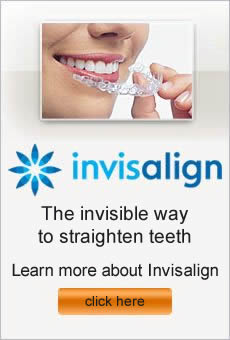If you are wearing braces to straighten teeth or correct other alignment issues, you need to take good care of teeth and gums. With the right steps, you can prevent issues with your braces or your mouth. During orthodontic treatment, you will visit the orthodontist regularly for adjustments and to monitor your progress. It’s also important to schedule routine checkups, which will help your dentist look for signs of tooth decay and ensure that your hygiene is adequate.
The following tips will help you preserve your smile while you have braces:
Take time to prepare
Before you brush, take off rubber bands and any other removable appliances. If you don’t make that effort, you risk damage to these devices.
Focus on the brackets
Unfortunately, braces and wires can easily trap food and debris, which may increase your chances of getting cavities. Tilt your brush at a 45 degree angle and work from the top down to ensure that you hit all the important spots.
Clean your teeth
Once you go over the brackets, turn your efforts to your teeth. Spend time cleaning each individual tooth. Some patients buy specially designed brushes that are supposed to maximize brushing efforts when you have braces.
Don’t forget to floss
Though the task is more difficult, flossing is critical when you have braces because it helps keep gum tissue healthy. Ask your orthodontist for any tips, and look into products like flossers, which can help make your job easier.
The final steps
After you have finished your routine, complete the process by rinsing with mouthwash or water. Then, look at your braces and teeth in the mirror to double-check that everything is alright.
We love to see you smile at our orthodontic dental practice in Sherman Oaks, CA – Mehdi Fotovat, DDS
After you finish corrective orthodontic therapy, your treatment probably won’t end. Most orthodontists recommend retainers for their patients. Because teeth have a tendency to shift back after treatment, this orthodontic device helps keep your teeth in the right position. Your orthodontist will determine how long you need the retainer for successful results, but patients often wear retainers for 12 to 24 months.
A retainer can be fixed or removable. As well, your retainer may be clear plastic or attached to a light-colored base with metal wires. Often, the top retainers can be taken out, but the ones for bottom teeth are cemented in place for the duration of treatment.
Once your braces come off, your orthodontist will take impressions of your teeth and use these molds to generate your retainer. Initially, you may need to wear your retainer at night and during the day. Your orthodontist will monitor your progress and adjust that schedule accordingly.
When you have a retainer, it’s important to take proper care of your appliance. Remember to:
• Keep the appliance in a safe place. You will probably receive a case, so make sure to put the retainer away when you aren’t wearing it.
• Clean your retainer. Part of good oral hygiene is brushing or soaking your appliance to remove germs and bacteria.
• If it breaks, contact your orthodontist right away. Don’t try to fix the retainer yourself because you may do more damage.
• Take your removable appliance out to eat or brush.
If you’re looking for an Orthodontist in Sherman Oaks CA, contact us to schedule a consultation. Dr. Fotovat – Burbank Orthodontist – WebBraces.com
Getting braces can be quite an adjustment. Because treatment typically lasts for 18 to 24 months, you need to plan on having your braces with you for some time. Knowing what to expect, how to care for braces, and other helpful information will ensure that you maximize your orthodontic treatment.
Eating and Braces
In general, you can eat plenty with braces. You do, however, need to avoid sticky foods like caramel, chewy foods like licorice, hard foods like nuts, and foods you have to bite into like corn on the cob. Feel free to much out on yogurt, pasta, diced chicken, green beans, bananas, and other easy-to-chew options.
Dealing with Discomfort
After the initial placement, your teeth and mouth may feel tender, which is perfectly normal. This discomfort will pass in a couple of days, after you get used to the braces. You may also experience some soreness after an adjustment.
Loose Brackets and Wires
Sometimes, wires and brackets become dislodged or break. If this happens, contact your orthodontist right away. You can place wax over the broken area to prevent irritation in your mouth.
Playing Sports
Having braces won’t stop you from going out for basketball, football, or your favorite sport. To protect your mouth, most orthodontists recommend a mouth guard, which covers your teeth and gums.
Caring for Your Teeth
During orthodontic treatment, it is really important that you practice good oral hygiene. Braces can make you more susceptible to problems like tooth decay and gum disease. Remember to brush after each meal, floss once a day, and see your dentist for routine exams.
We care about your smile at our Sherman Oaks, CA orthodontic office – Mehdi Fotovat, DDS.
You may not realize it, but certain bad habits can be detrimental to your dental health. While it may not seem like nail biting or chewing ice are big issues, they can have definite consequences on your smile. Breaking these habits now can prevent more damage later, as well as save you time in the orthodontist’s chair and extra expenses.
• Thumb sucking
For infants and toddlers, thumb sucking is a method of self soothing. Problems arise when children continue that habit past kindergarten. At that time, permanent teeth being to erupt and thumb sucking can affect their position, which may create orthodontic issues.
• Brushing too hard
Gum recession and loss of supporting bone can occur when you scrub your teeth in full power mode. If you aren’t sure about proper brushing techniques, ask your dentist or hygienist.
• Clenching and grinding teeth
Also called bruxism, teeth grinding and clenching is usually a subconscious response to stress. Often, people clench and grind their teeth at night time. Prolonged bruxism can result in cracked teeth, headaches, sore muscles, and limited function. Your orthodontist can fit you for a night guard to prevent bruxism.
• Chewing ice
A common habit, chewing ice, or using teeth as scissors, puts tremendous strain on your teeth and may cause fractures, cracks, or complete tooth breakage.
• Nail biting
Not only does nail biting introduce germs into your mouth, but it can also weaken tooth strength and create gaps between teeth, which may increase your odds of needing orthodontic treatment.
Consider our Orthodontic team in Sherman Oaks California – Dr. Fotovat – Burbank Orthodontist – WebBraces.com
When you have braces or other orthodontic appliances, your teeth need special care. Making sure to follow proper oral hygiene steps will ensure optimal results and prevent any treatment delays. These tips will help you take good care of your teeth and gums during treatment.
• Brush your teeth after eating meals and when you snack so that food doesn’t get trapped between braces.
• If you can’t brush right away, rinse your mouth with water.
• Make sure to floss at least once a day.
• Flossing may be more difficult so ask your orthodontist about floss threaders, which will help you get the floss between your braces. Waxed floss may work better because it won’t fray.
• Find out if your orthodontist has any special recommendations about the toothbrush you should use. You can find toothbrushes designed to make brushing more efficient, including V-shaped brushes, brushes that bend at the neck, and round hard brushes.
• Use toothpaste with fluoride, which will give your teeth extra protection against decay.
• Avoid hard or sticky foods like bubble gum, caramel, or nuts while you have braces because these items can damage brackets.
• Limit soft drinks because they are very acidic and may cause decalcification, a precursor to tooth decay, around your brackets.
• Schedule regular checkups with your dentist at least every six months. Depending on your situation, the dentist or orthodontist may recommend more frequent visits while you have braces.
• Don’t pull or pick at your braces.
Orthodontist in Sherman Oaks, California – Dr. Mehdi Fotovat – Burbank Orthodontist – WebBraces.com



